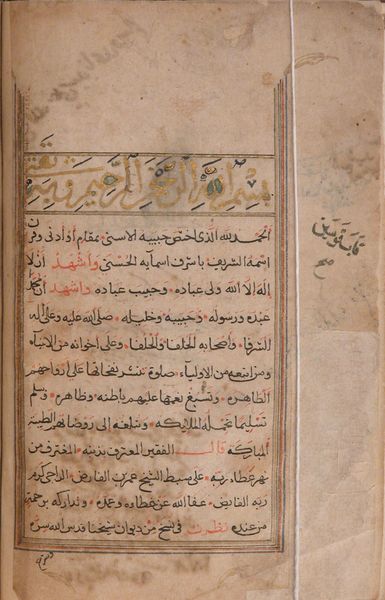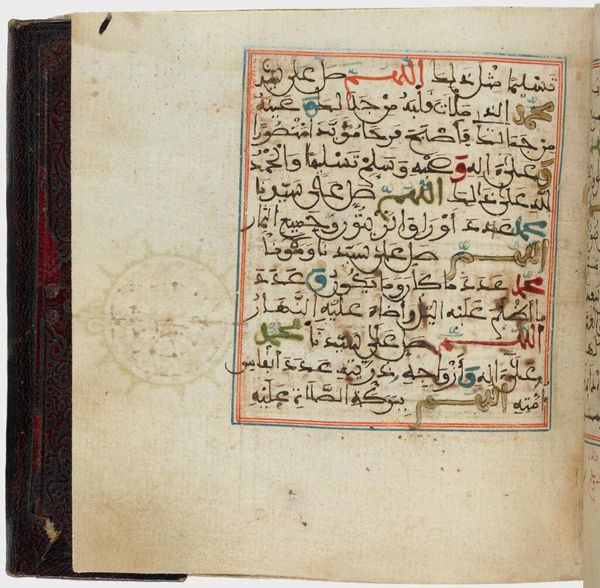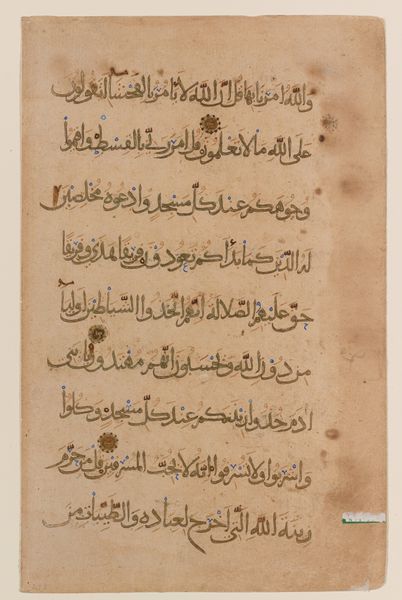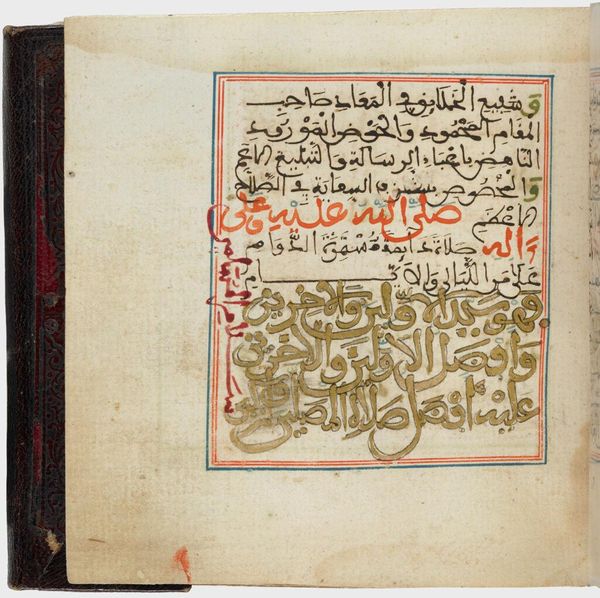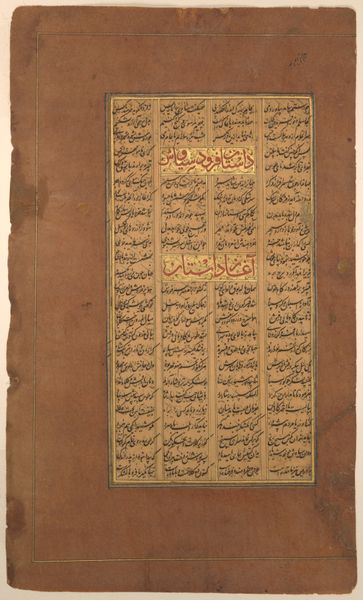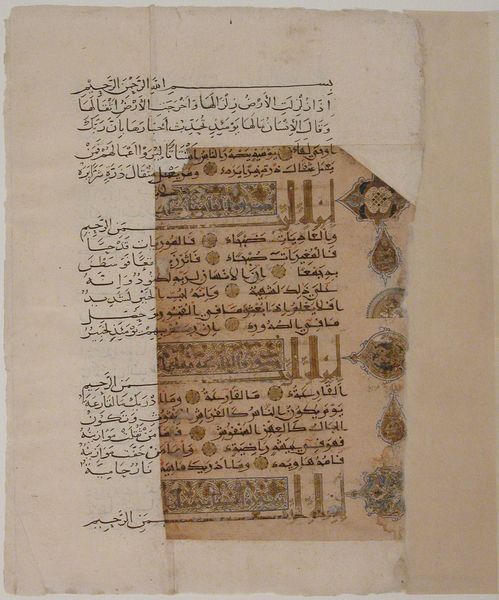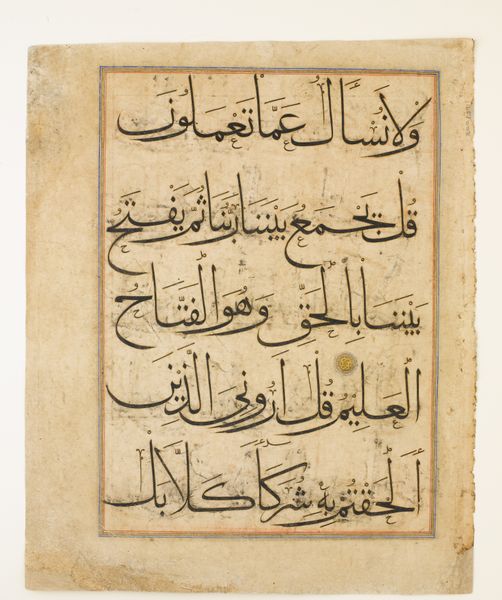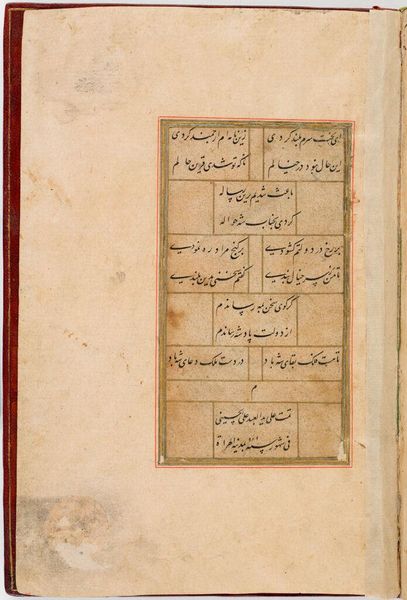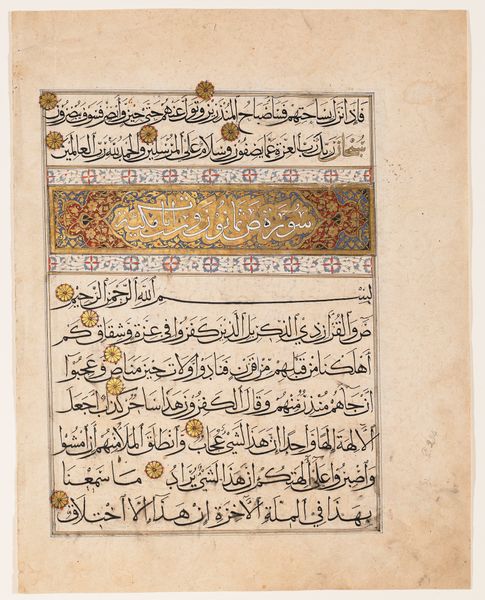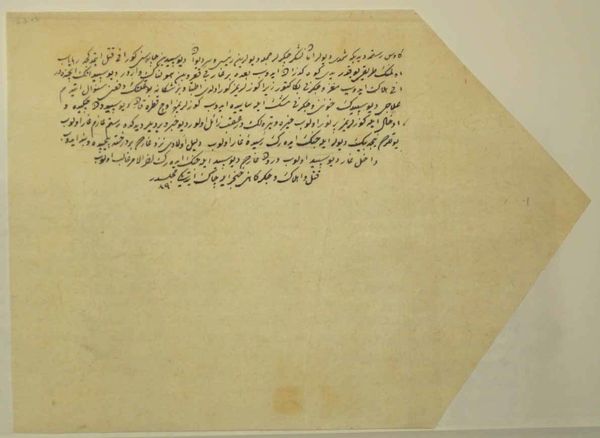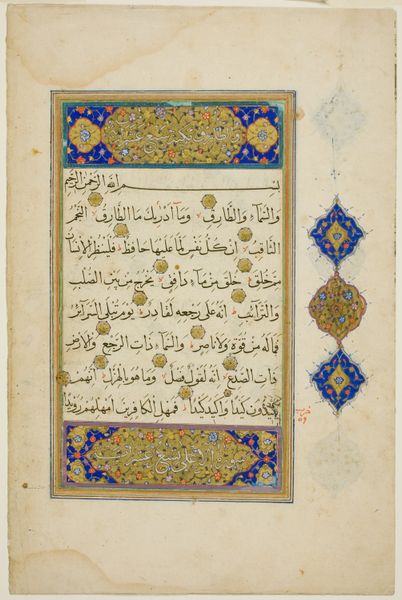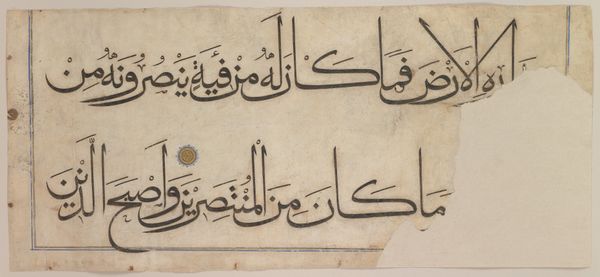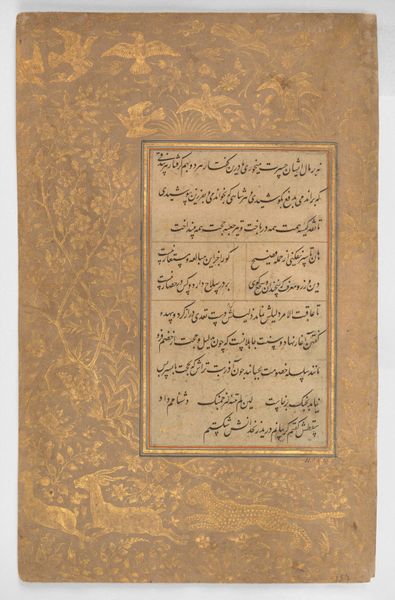
mixed-media, textile, paper, ink
#
mixed-media
#
medieval
#
textile
#
paper
#
ink
#
islamic-art
#
mixed medium
#
mixed media
#
calligraphy
Dimensions: 13 3/8 x 7 11/16 in. (34 x 19.6 cm) (image, sheet)
Copyright: Public Domain
Curator: Let’s spend a few minutes contemplating this "Page from the Koran," a beautiful example of 12th-century Islamic calligraphy currently housed here at the Minneapolis Institute of Art. Editor: My initial reaction is of a gentle, meditative quietude. It's hard to put into words, but the page emanates an inner calmness despite the intricacy of its components. What details are immediately grabbing your attention? Curator: Well, beyond the script itself, which, of course, is central, I'm drawn to the overall structure and composition of the piece, made with ink on paper with textile applications. Notice how the text is arranged in neat, horizontal bands, punctuated by these almost celestial rosette-like designs? Editor: Yes, the ornamental medallions that serve as textual dividers have an otherworldly quality. Are we able to speculate about the page’s role in a larger manuscript? Curator: Indeed, this would have been part of a larger volume, treated with the utmost reverence. Each stroke of the pen was carefully considered; the page embodies not just information but also a profound spiritual dedication, and its material elements seem integrated to further facilitate meaning making. Editor: Looking at the distribution of visual weight, how might you unpack this piece using, say, a structuralist framework? The interplay between text and illumination invites the reader into a world that’s both concrete and ethereal, doesn’t it? Curator: Precisely. The script and ornamental motifs function like a dance, where precision and ornamentation enrich and play off of one another. It’s clear that the text takes precedent over decoration in its central organization of shapes. I feel its composition reveals a very beautiful intention toward a pure understanding. Editor: As we've explored, the combined effect of form and meaning speaks to both the physical and the metaphysical, uniting calligraphic style, materiality, and spiritual import. Curator: Right—this "Page from the Koran" offers such an evocative encounter. It acts almost like a contemplative window into the mind of its creator and the era that bore it.
Comments
minneapolisinstituteofart almost 2 years ago
⋮
The essence of writing is in the spirit. -Persian proverbCalligraphy is the most highly regarded form of artistic expression in Islam. Hand writing the Koran in Arabic script and is also an act of religious devotion, and calligraphers earn spiritual merit as they make visible the word of God.The Koran (“recitation” in Arabic) was revealed orally to the Prophet Mohammad between the years 610 and 632. Mohammed’s son-in-law Ali developed the first sacred script several decades later. This script has been refined and embellished over the ensuing years as the Koran has been copied in its original Arabic language again and again throughout the world. The sanctity of the text and the significance of writing it by hand delayed the adoption of mass production of the Koran.
Join the conversation
Join millions of artists and users on Artera today and experience the ultimate creative platform.
